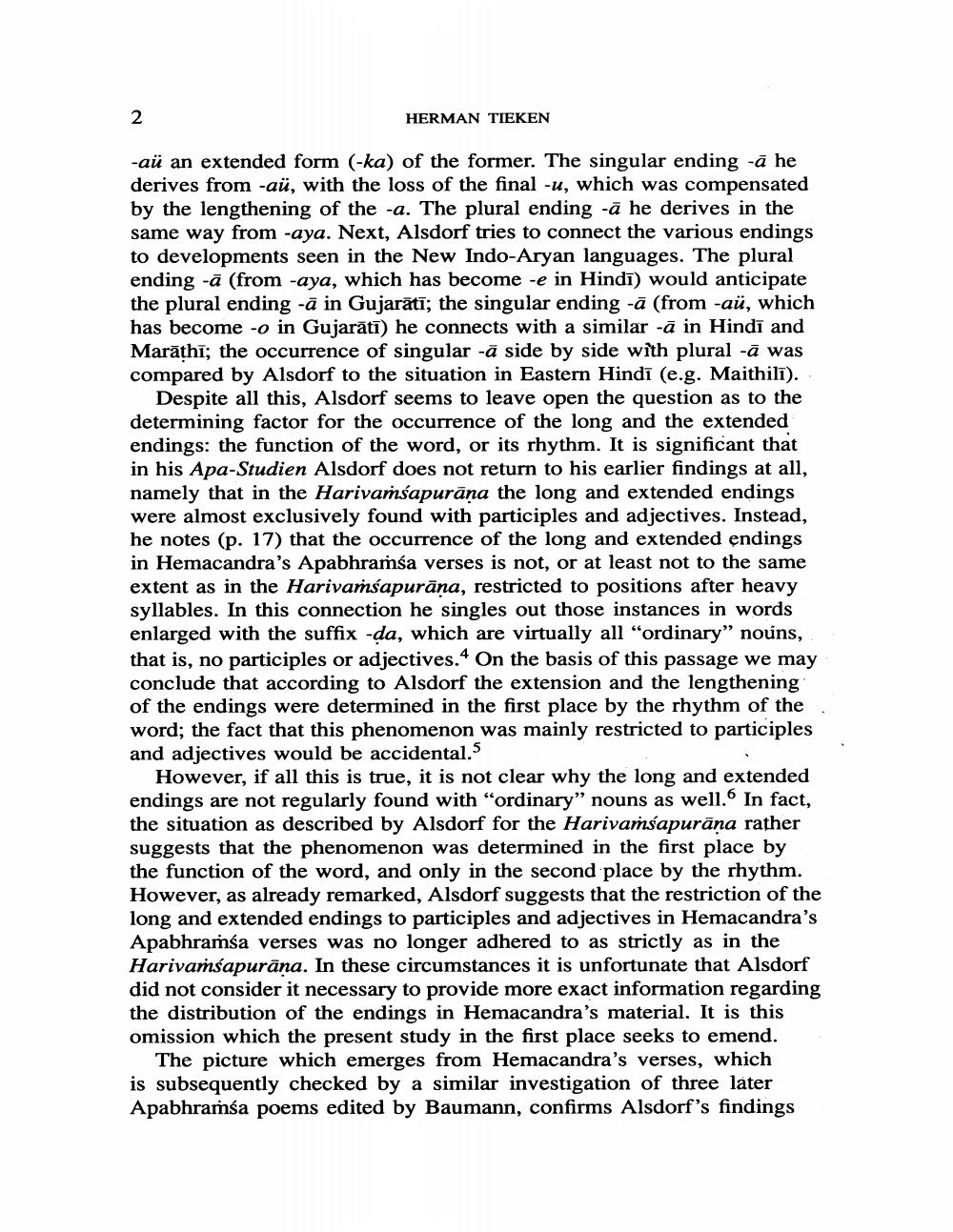________________
HERMAN TIEKEN
-aü an extended form (-ka) of the former. The singular ending -ā he derives from -aü, with the loss of the final -u, which was compensated by the lengthening of the -a. The plural ending -ā he derives in the same way from -aya. Next, Alsdorf tries to connect the various endings to developments seen in the New Indo-Aryan languages. The plural ending -ā (from -aya, which has become -e in Hindī) would anticipate the plural ending -ā in Gujarātī; the singular ending -ā (from -aü, which has become -o in Gujarātī) he connects with a similar -a in Hindi and Marāthī; the occurrence of singular -ā side by side with plural -ā was compared by Alsdorf to the situation in Eastern Hindi (e.g. Maithilī).
Despite all this, Alsdorf seems to leave open the question as to the determining factor for the occurrence of the long and the extended endings: the function of the word, or its rhythm. It is significant that in his Apa-Studien Alsdorf does not return to his earlier findings at all, namely that in the Harivarśapurāna the long and extended endings were almost exclusively found with participles and adjectives. Instead, he notes (p. 17) that the occurrence of the long and extended endings in Hemacandra's Apabhramsa verses is not, or at least not to the same extent as in the Harivarśapurāna, restricted to positions after heavy syllables. In this connection he singles out those instances in words enlarged with the suffix -da, which are virtually all “ordinary" nouns, that is, no participles or adjectives. On the basis of this passage we may conclude that according to Alsdorf the extension and the lengthening of the endings were determined in the first place by the rhythm of the word; the fact that this phenomenon was mainly restricted to participles and adjectives would be accidental.S
However, if all this is true, it is not clear why the long and extended endings are not regularly found with "ordinary” nouns as well. In fact, the situation as described by Alsdorf for the Harivarśapurāna rather suggests that the phenomenon was determined in the first place by the function of the word, and only in the second place by the rhythm. However, as already remarked, Alsdorf suggests that the restriction of the long and extended endings to participles and adjectives in Hemacandra's Apabhraíśa verses was no longer adhered to as strictly as in the Harivarśapurāna. In these circumstances it is unfortunate that Alsdorf did not consider it necessary to provide more exact information regarding the distribution of the endings in Hemacandra's material. It is this omission which the present study in the first place seeks to emend.
The picture which emerges from Hemacandra's verses, which is subsequently checked by a similar investigation of three later Apabhramsa poems edited by Baumann, confirms Alsdorf's findings




